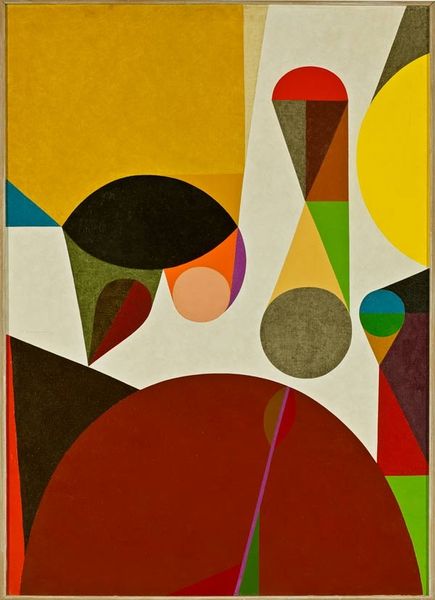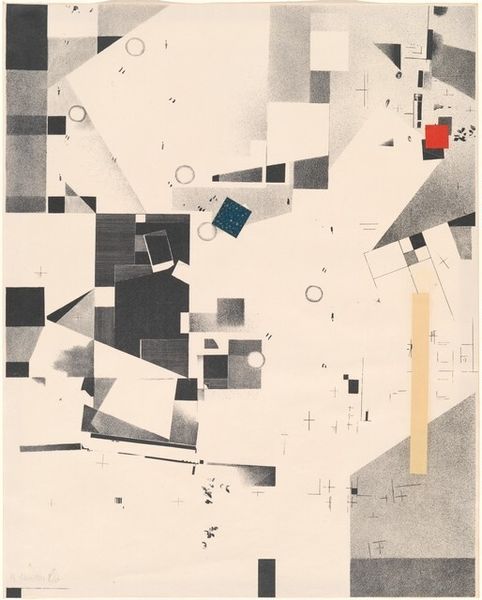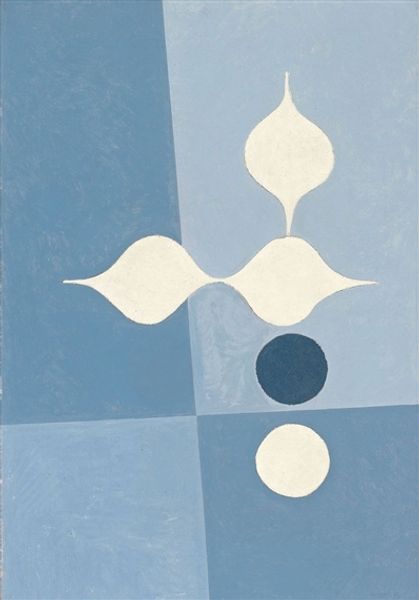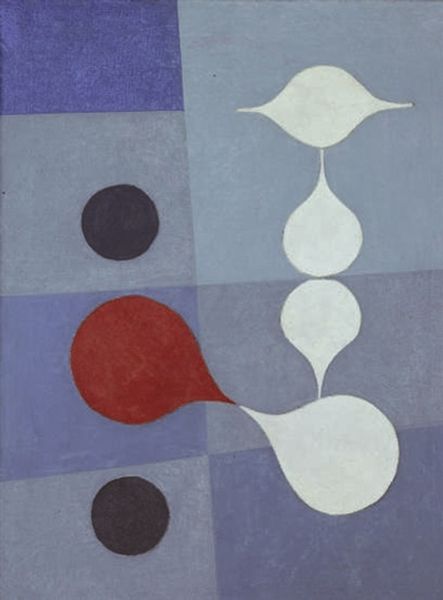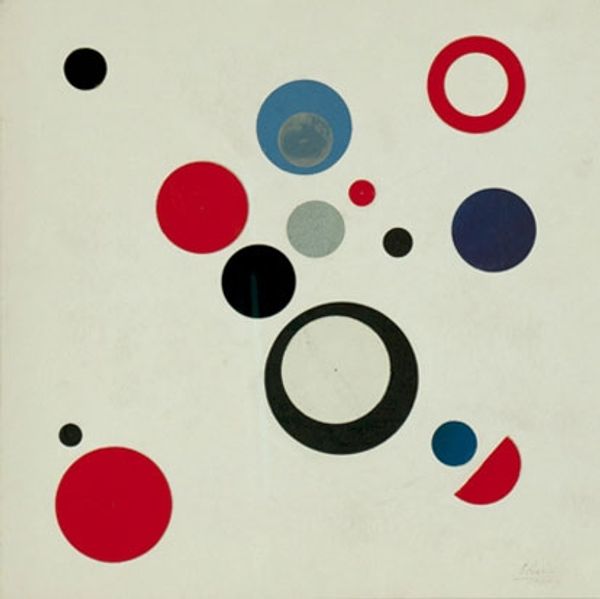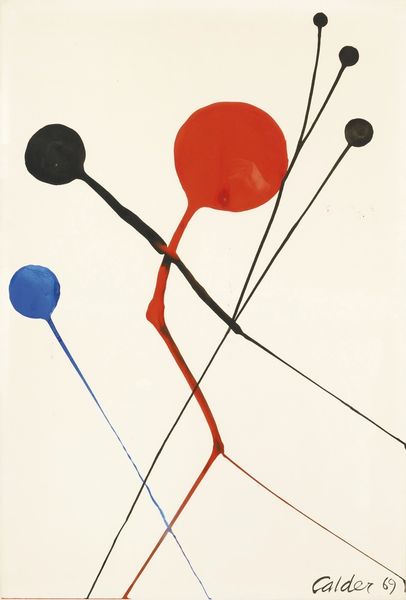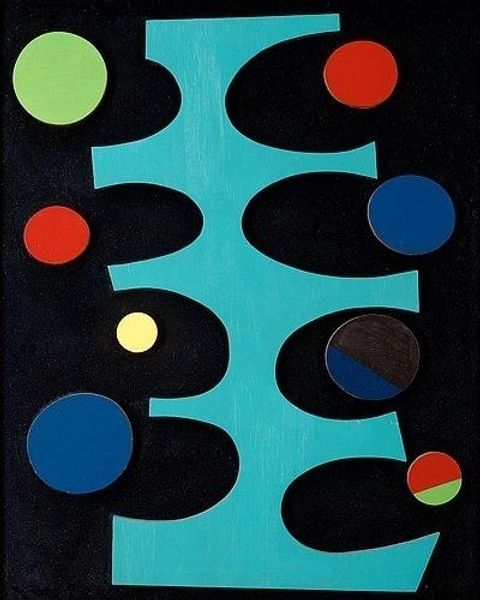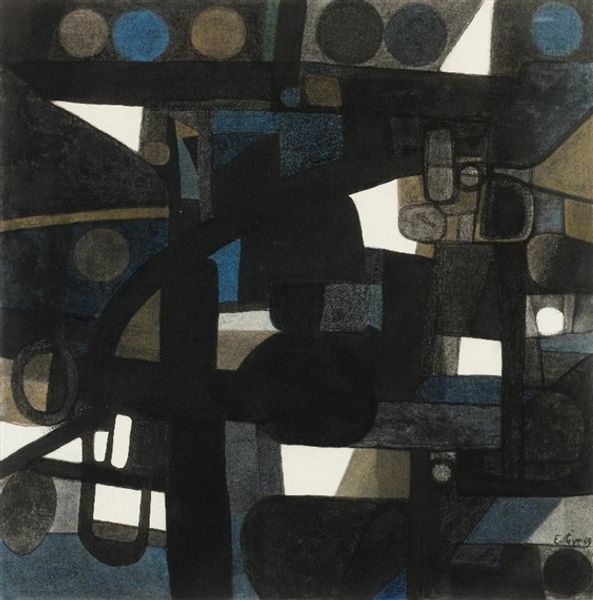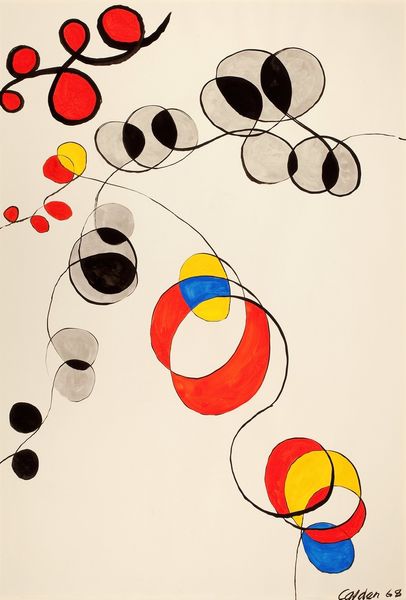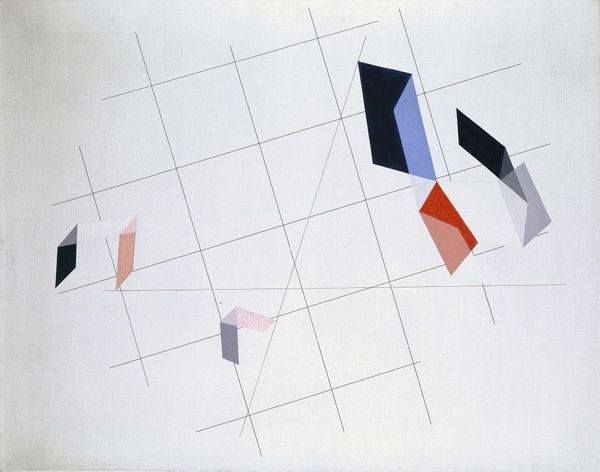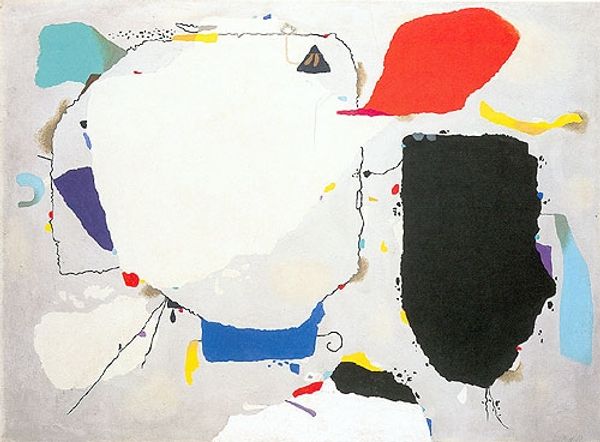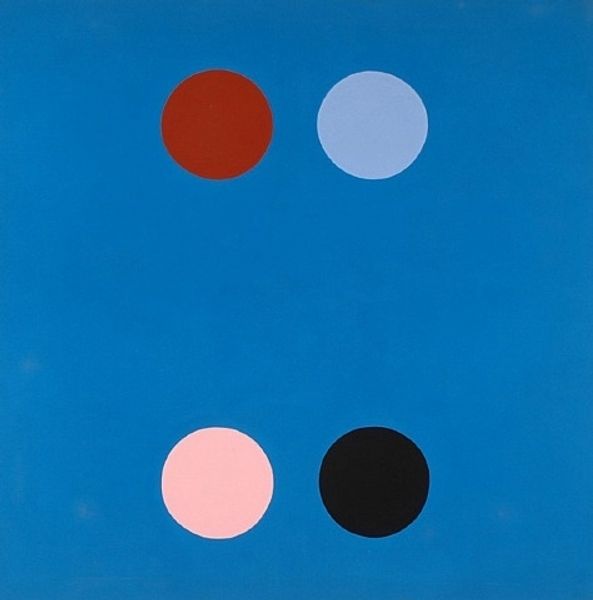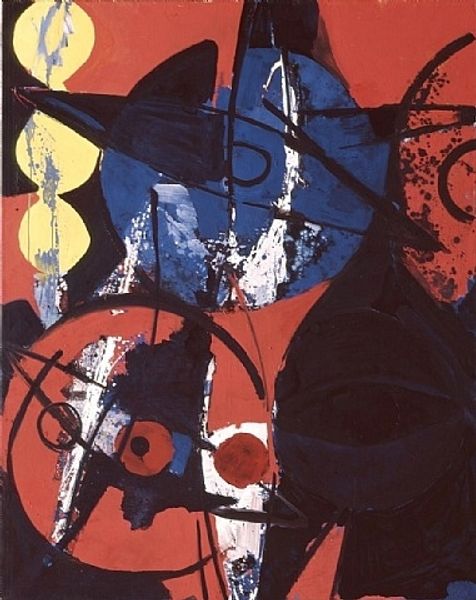
mixed-media
#
mixed-media
#
pattern
#
constructivism
#
geometric-abstraction
#
decorative art
Copyright: Public domain
Editor: We’re looking at László Moholy-Nagy's "Construction AL6" from 1933, a mixed-media piece. It feels almost like looking at a diagram or a strange kind of map with all of its circles and geometric shapes. What's your take on this composition? Curator: It's fascinating how Moholy-Nagy engages with Constructivism at a politically charged moment. We often think of Constructivism as utopian, tied to early Soviet ideals of industrial progress and social engineering. How does this image speak to that ideal, especially given the date? Editor: It's definitely more chaotic than I initially expected from Constructivism. The shapes almost feel like they are floating rather than fitting perfectly together. Do you think the lack of precision here is a reflection of something? Curator: It absolutely could be. The fractured arrangement, the floating circles and geometric figures – consider the social and political context of 1933. We're on the cusp of World War II; Bauhaus, where Moholy-Nagy taught, was shut down by the Nazis. Does this fragmentation hint at a crumbling utopia, the disintegration of ideals? Editor: So, rather than a celebration of progress, it's a critique, almost a premonition? Curator: Perhaps. The "construction" suggests building, but is it also about deconstruction, revealing the fragility of social structures through its seemingly unstable composition? The choice of mixed media is also quite intriguing and probably deserves deeper exploration. Editor: This has given me so much to think about – it’s incredible how much history can be packed into an abstract image. Curator: Precisely! It’s a reminder that art doesn’t exist in a vacuum. Understanding its history lets us interpret its cultural and political weight.
Comments
No comments
Be the first to comment and join the conversation on the ultimate creative platform.

